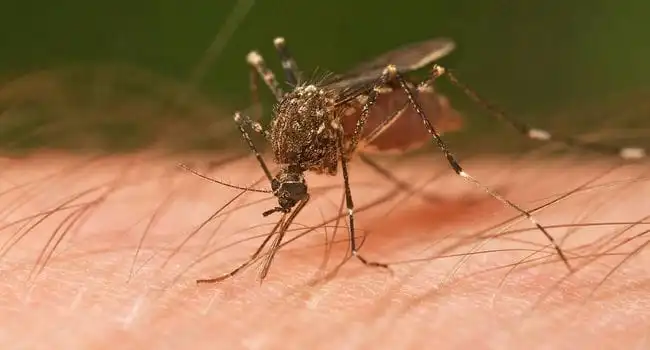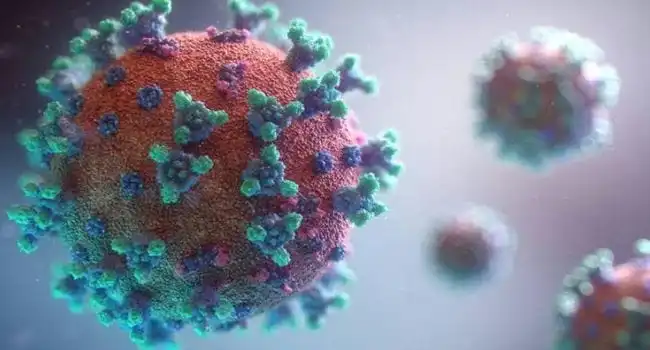Throughout human history, there have been a wide variety of diseases that have been passed on to humans from animals. From the bubonic plague to HIV, animal-borne diseases have had a tremendous impact on human populations. Here are 10 of the most notable diseases that have come from animals.
10- Plague

Photo Credit: Science
The Plague, also known as the Black Death, is one of the most devastating pandemics in human history. It is caused by the bacteria Yersinia pestis and is primarily spread through contact with infected animals, particularly rats. During the Middle Ages, the Plague spread rapidly, killing millions of people in Europe and Asia.
Today, the Plague is still an ongoing problem in some parts of the world. It is estimated that up to 2,000 people are infected each year, primarily in parts of Africa and Asia. Symptoms of the Plague include fever, chills, and swollen lymph nodes. Treatment with antibiotics is effective if given early enough, but can be deadly if not diagnosed and treated quickly.
The Plague has been the subject of countless books, films, and other works of art, due to its sheer destruction and the impact it had on history. From “The Decameron” to “The Seventh Seal,” the Plague has been a source of inspiration for centuries.
9- Rabies

The rabies virus is an infectious disease that is spread through the saliva of infected animals, most commonly through the bite of a rabid animal. The virus affects the central nervous system, leading to inflammation of the brain and ultimately death. The virus is most commonly transmitted through bites from infected animals, though it can also be contracted through contact with saliva from an infected animal or through contact with the infected animal’s tissue.
The rabies virus is one of the oldest known diseases, with evidence of its presence dating back to the Roman Empire. It is also one of the most feared diseases, as it has no known cure and is almost always fatal if left untreated. Rabies is most prevalent in certain parts of the world, especially in areas with a large population of wild animals, such as Africa and Asia.
Thankfully, rabies is a preventable disease. Vaccination is the most effective way to protect yourself and your family from rabies. Vaccination can help lessen the severity of symptoms and reduce the chances of death in the event of infection. Vaccines are available for both humans and animals, and it is important to ensure that all pets are up to date on their vaccinations.
8- Toxoplasmosis

Photo Credit: CBC
Toxoplasmosis is an infectious disease caused by the parasite Toxoplasma gondii, which can be found in a variety of animals, including household pets such as cats. The parasite is transmitted to humans through contact with contaminated animal feces, undercooked or raw meat, or through contact with soil contaminated with cat feces. People who are infected with this parasite may experience flu-like symptoms, such as fever, fatigue, and muscle aches. In some cases, the infection can cause more severe symptoms, such as eye infections, swelling of the brain, and seizures.
Fortunately, the majority of people who are exposed to the parasite will not become severely ill. Those who are most at risk of developing more serious complications are infants, pregnant women, and those with weakened immune systems. People with toxoplasmosis can take medications to help reduce the severity of the symptoms, and in some cases, the infection can be treated with antibiotics.
It is also important to take precautions to avoid becoming infected, such as wearing gloves when gardening and washing hands thoroughly after handling raw meats or coming into contact with soil or feces. Additionally, pregnant women should avoid handling cat litter and should make sure to cook all meats thoroughly. Taking these simple steps can help protect you and your family from this potentially dangerous disease.
7- Hantavirus

Photo Credit: Weather
Hantavirus is an infectious disease caused by the hantavirus. It is primarily spread through contact with the urine, droppings, and saliva of infected rodents, such as mice and rats. Humans can also become infected through contact with contaminated surfaces, such as soil and dust.
Symptoms of hantavirus infection can range from fever, fatigue, and muscle aches to difficulty breathing. In some cases, it can cause severe respiratory problems, including severe pulmonary edema (fluid in the lungs). Severe cases of hantavirus can result in death.
In order to prevent hantavirus infection, it is important to practice good hygiene and avoid contact with rodents and their droppings and urine. It is also important to clean and disinfect any surfaces that may have come into contact with rodents or their droppings.
Hantavirus is a serious and potentially life-threatening condition, and it is important to seek medical attention if you think you may have been exposed to the virus. Early detection and treatment are key to preventing serious complications and a successful recovery.
6- Malaria

Malaria is a deadly and debilitating infectious disease caused by a single-celled parasite known as Plasmodium. It is transmitted to humans through the bite of an infected female Anopheles mosquito. Malaria is one of the oldest and most widespread diseases in human history, affecting populations in over 100 countries and territories around the world.
Although malaria is preventable and treatable, it still kills more than 1,000,000 people each year, mostly children in Africa. It is responsible for the deaths of more children than any other infectious disease and is a major health and economic burden in many countries.
Malaria can cause fever, chills, extreme fatigue, and in severe cases, death. It is caused by four different species of Plasmodium, all of which target red blood cells and can cause anemia. The most common symptoms of malaria are fever, headache, body aches, nausea and vomiting, and in some cases, seizures.
5- Coronavirus

The novel coronavirus, also known as SARS-CoV-2, is a virus that is believed to have originated from animals. It is one of the seven known coronaviruses that can cause severe respiratory illness in humans. The other six include the original Severe Acute Respiratory Syndrome (SARS), Middle East Respiratory Syndrome (MERS), and four common cold-causing coronaviruses.
The virus is thought to have originated in bats, which are known to carry many different kinds of coronaviruses. It is believed that the virus was transmitted from bats to humans via an intermediary host, such as another animal or a human. This is known as a “spillover event” and it is thought to have occurred in late 2019 in China, where the first cases of the virus were reported.
Since then, the virus has spread rapidly around the world, causing a global pandemic. It is now known to be highly contagious and to spread quickly from person to person through respiratory droplets, such as when an infected person coughs or sneezes. It can also be spread through contact with contaminated surfaces.
4- HIV/AIDS

Photo Credit: Science
HIV/AIDS is one of the most devastating diseases to ever affect humanity. It is a virus that affects the immune system, making it unable to fight off other infections and diseases, and eventually leading to death. The virus has been around since the early 1980s, but it was only in the early 1990s that it was identified as a human immunodeficiency virus (HIV).
It is thought that humans were infected by coming into contact with infected animals. It is still unclear exactly how this happened, but it is believed that it may be through contact with infected blood.
Once a human is infected with HIV, it can spread from person to person through contact with bodily fluids, such as blood, semen, or breast milk. It can also be spread from mother to child during childbirth or breastfeeding. Although there is no cure for HIV/AIDS, it can be managed with antiretroviral therapy (ART). ART works by suppressing the virus, allowing the immune system to function normally and allowing people to live longer and healthier lives.
3- Influenza

It’s no surprise that influenza, commonly known as the flu, has been making headlines in recent years. This highly contagious viral infection is caused by the influenza virus, which is commonly found in both humans and animals. In fact, it’s believed that the virus originated in animals, as it has been known to spread from birds and pigs to humans.
The flu is spread by inhaling droplets of saliva or mucus that are released into the air when a person with the virus coughs, sneezes or speaks. Unfortunately, it’s very difficult to avoid the flu, as it can be spread through contact with infected surfaces. For instance, if an infected person touches a doorknob, the virus can easily transfer to a healthy person who touches the same doorknob.
The symptoms of influenza can range from mild to severe, and may include fever, body aches, sore throat, fatigue, and dry cough. In some cases, the virus can lead to more serious complications, such as pneumonia and bronchitis. In order to avoid the spread of the virus, it is important to practice good hygiene and avoid contact with people who are ill.
2- Monkeypox

Photo Credit: Initial
Monkeypox is a rare viral infectious disease that was first discovered in 1958 in monkeys. It is closely related to the smallpox virus, and is believed to have evolved from a common ancestor of the two viruses. The virus is spread through direct contact with an infected animal. It can also spread through contact with droppings, secretions, or materials contaminated with the virus. It can also be spread through human-to-human contact, but this is much less common.
Symptoms of monkeypox include fever, chills, body aches, headache, and a rash that usually starts on the face and spreads to the rest of the body. It can also cause swollen lymph nodes, eye irritation, and difficulty breathing. Treatment for monkeypox usually involves antiviral medications, antibiotics, and supportive care. Vaccines are available to help prevent the virus, but they are not 100% effective
1- Ebola

Photo Credit: Science
Ebola is a rare and deadly virus that is found in animals, and can spread to humans through contact with an infected animal’s bodily fluids. The virus can then spread from person to person through contact with bodily fluids. It is a serious, often fatal disease that is relatively new to humans; the first recorded outbreak of Ebola occurred in 1976.
The Ebola virus is extremely contagious and can cause severe illness and death. Symptoms of Ebola include fever, chills, body ache, headache, fatigue, vomiting, diarrhea, abdominal pain, and a rash. In some cases, it can cause bleeding from the eyes, ears, nose, and mouth.
Ebola is a dangerous virus, and the mortality rate can be as high as 90%. Treatment includes supportive care to help the body fight the virus and prevent secondary infections. There is no cure or vaccine for the virus, so prevention is key. It is important to avoid contact with an infected animal, and to practice good hygiene, such as washing hands frequently, in order to avoid spreading the virus. If you think you have been exposed to the virus, seek medical care immediately.


